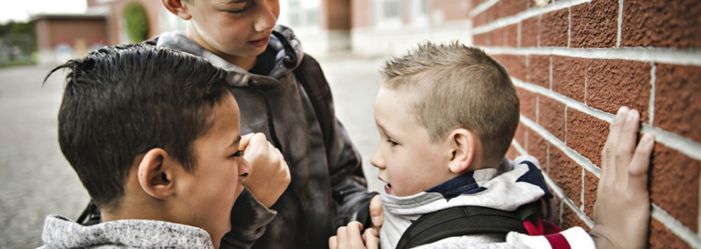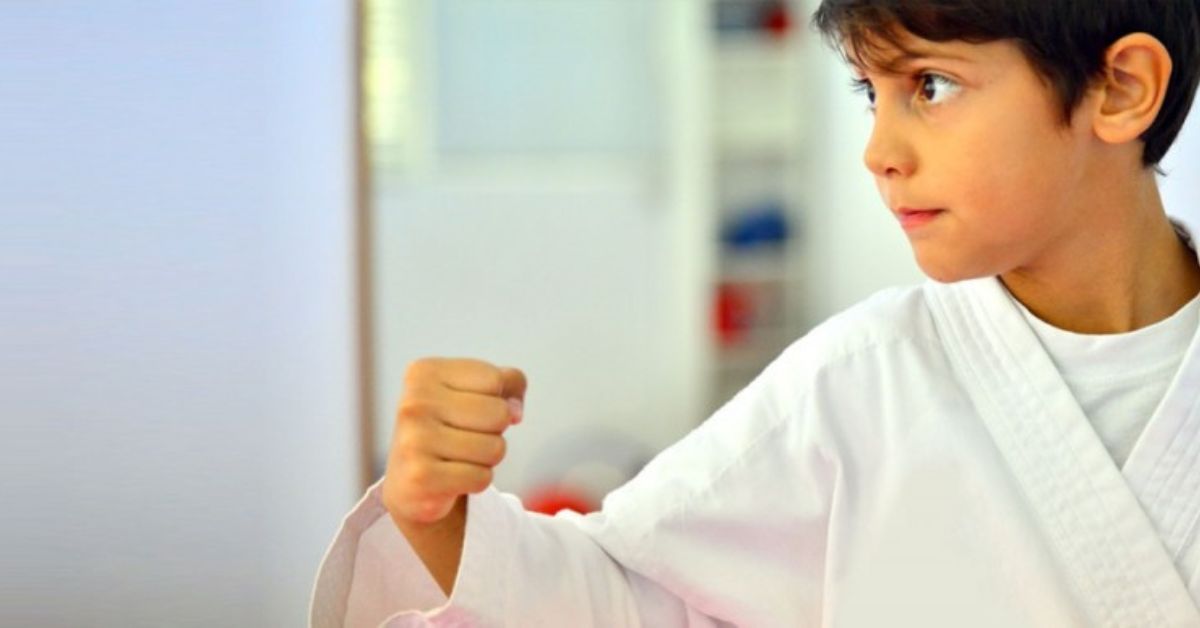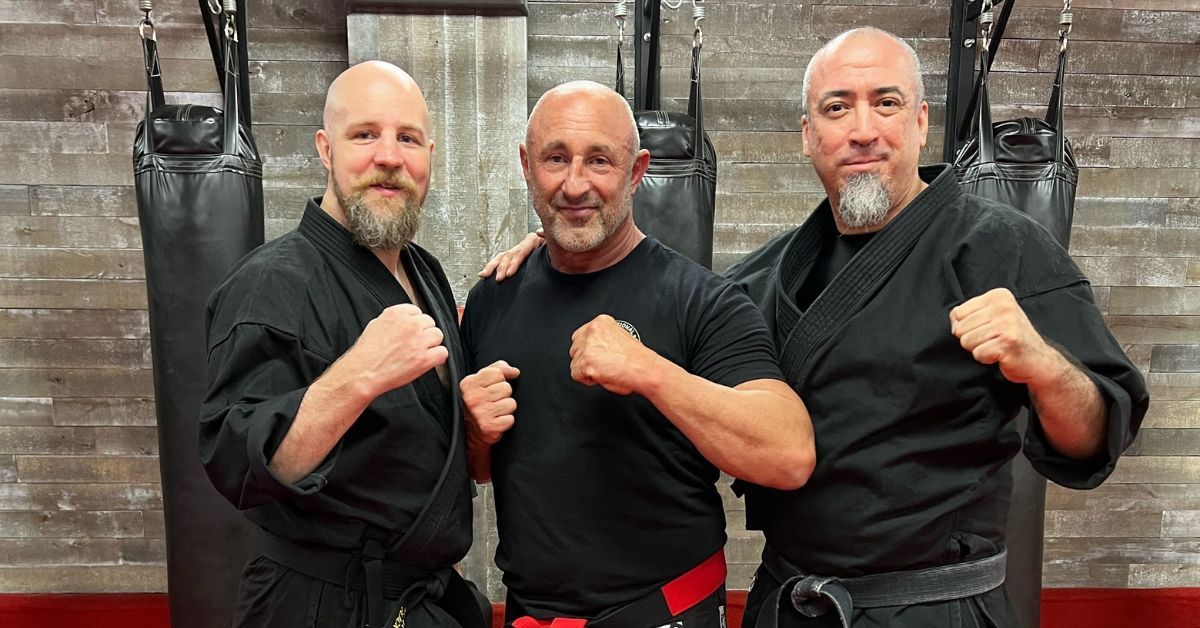How Martial Arts Can Help Your Child Stand Up to Bullies

Why Bullying is Every Parent’s Concern
Imagine this: your child comes home from school, quieter than usual. When you ask how their day was, they shrug and mutter, "It was fine," but you can see the pain in their eyes. Something happened today—maybe something that’s been happening for weeks or even months—but they won’t say it out loud. The truth is, bullying has found its way into their life, and as a parent, you feel helpless.
Bullying isn’t just about playground scuffles anymore. It’s emotional, it’s psychological, and sometimes it follows kids home through social media and texts. For many children, bullying is a relentless daily battle that chips away at their confidence and joy. And for parents, it’s an ongoing worry, knowing that your child might be suffering in silence.
You want to help. You want to protect them. But how? You can’t be there every minute of the day. This is where martial arts can make all the difference.
The Martial Arts Mindset: Empowering Your Child from the Inside Out
One of the biggest misconceptions about martial arts is that it’s just about learning how to punch and kick. In reality, martial arts is about so much more—it’s about building a strong mind and resilient spirit. This is where the magic happens when it comes to helping kids stand up to bullies.
Why Mindset Matters
I remember a young student who joined our class a few years ago. He was quiet, shy, and always seemed to be looking over his shoulder. After a few conversations with his parents, I learned that he had been dealing with bullying at school. The emotional toll it had taken on him was heartbreaking. But here’s the thing: over the course of a few months, I watched this boy transform. It wasn’t just that he learned how to defend himself physically—it was that he started to carry himself differently. His confidence grew, and that shy kid who used to hang his head began to stand tall, make eye contact, and speak with more assurance.
That’s the power of the martial arts mindset. It teaches kids that they are capable of handling tough situations—not just physically, but emotionally as well. When children feel confident in themselves, they become less attractive targets for bullies. Bullies thrive on picking on those who seem vulnerable, but martial arts helps kids project confidence and resilience, making them less likely to be victimized in the first place.
Building Confidence
Martial arts classes are designed to build a child’s self-esteem from the inside out. From mastering new techniques to earning their next belt, kids experience a sense of accomplishment that carries over into all aspects of their lives. They learn that they can overcome challenges, which boosts their confidence not only in the dojo but also in the classroom, on the playground, and beyond.
Instilling Discipline and Focus
Another critical element of martial arts training is discipline. Kids are taught to focus on the task at hand, to respect their instructors and peers, and to maintain self-control. These qualities help them stay calm in stressful situations, such as when they’re being bullied. Rather than reacting impulsively or out of fear, they learn to pause, assess the situation, and respond thoughtfully. This level-headedness is a powerful defense against bullying.
Practical Self-Defense Techniques Every Child Can Learn
Of course, mindset alone isn’t always enough. Sometimes, kids need to know how to defend themselves physically, and that’s where martial arts comes in. But the beauty of martial arts is that it doesn’t just teach kids to fight—it teaches them to protect themselves in a way that minimizes the risk of escalating the situation.
Beyond the Classroom
One of the most valuable lessons I’ve learned as both a martial artist and a teacher is that self-defense is about more than just techniques—it’s about awareness. Martial arts teaches kids to be aware of their surroundings and to recognize potential threats before they escalate. This situational awareness is key to preventing bullying encounters from turning physical.
For instance, I once had a student who was being bullied on the bus. After learning basic situational awareness techniques in class, she started noticing patterns in the bully’s behavior. She realized that sitting closer to the bus driver made her feel safer and less accessible to the bully. It was a small change, but it made a big difference in her daily life.
The Importance of Non-Violent Conflict Resolution
Martial arts isn’t about teaching kids to throw the first punch—it’s about teaching them how to avoid the need to throw one at all. Many martial arts schools, including ours, focus on non-violent conflict resolution. We teach kids how to use their words, body language, and confidence to diffuse situations before they become physical.
I’ll never forget the story of one of my students, a boy who was smaller than most of his classmates. He was being picked on regularly, but after a few months of martial arts training, he came to me with a smile on his face. "I didn’t have to fight," he said. "I just told him to back off, and he did." That’s the goal—not to teach kids to fight, but to teach them to stand up for themselves in a way that resolves the situation peacefully.
Physical Self-Defense
Of course, sometimes verbal de-escalation isn’t enough, and that’s when physical self-defense becomes necessary. Martial arts teaches kids practical techniques that they can use to protect themselves if a bully becomes aggressive. These techniques are designed to be effective without requiring a lot of strength, which is especially important for smaller children.
For example, we teach kids how to break free from a grab, how to block a punch, and how to use leverage to defend themselves against a larger attacker. These aren’t flashy movie-style moves—they’re simple, effective techniques that can make all the difference in a dangerous situation.
The Power of Community: How Martial Arts Builds a Support System
One of the most underrated aspects of martial arts training is the sense of community it fosters. When kids join a martial arts school, they’re not just learning self-defense—they’re joining a group of peers who support and uplift each other.
Strength in Numbers
I’ve seen it time and time again: kids who feel alone in their struggles with bullying find strength in the friendships they make through martial arts. The camaraderie that develops in a dojo is something special. When kids train together, they learn to trust each other, support each other, and celebrate each other’s successes. This sense of belonging can be a game-changer for children who feel isolated or targeted by bullies.
Role Models for Life
Martial arts instructors often become important role models for kids. They’re not just teaching techniques—they’re teaching life lessons. Instructors show kids how to handle challenges with grace and resilience, and they lead by example. I’ve had parents tell me that their child looks up to me not just as a teacher, but as a mentor, and that’s a responsibility I take seriously.
When kids see their instructors living the values of martial arts—respect, discipline, perseverance—they’re more likely to internalize those values themselves. And those values can help them navigate the challenges of bullying.
Stories of Camaraderie
I’ll never forget the story of two of my students, both of whom had been dealing with bullying at school. They didn’t know each other when they first joined the dojo, but over time, they became fast friends. They supported each other through tough training sessions, encouraged each other to keep going when things got hard, and eventually, they both found the confidence to stand up to their bullies. Today, they’re still friends, and their parents have told me that martial arts made all the difference in their lives.
Real-Life Success Stories: How Martial Arts Has Helped Kids Overcome Bullying
Case Study 1: From Victim to Victor
One of my favorite stories is about a young girl who came to our school after months of being bullied at recess. She was withdrawn and scared, and her parents were at their wit’s end. But after just a few months of training, something changed. She started to walk with her head held high. She began to speak up for herself, both in class and in social circles. And one day, when the bully tried to pick on her again, she stood her ground and asserted herself appropriately. She didn’t need to resort to physical action because the confidence she had gained at the dojo was enough to make the bully back off. To say her parents were overjoyed would be an understatement, and she was proud of herself for standing up to her tormentor.
Case Study 2: The Power of Prevention
Another story that stands out is about a boy who never had to physically defend himself because of what he learned in martial arts. He was a smart, quiet kid, and he was an easy target for bullies. But after a few months of training, he learned how to project confidence, how to avoid dangerous situations, and how to stand up for himself with his words. He never had to throw a punch, but the bullying stopped. His parents told me that martial arts had given him the tools to protect himself without ever getting into a fight.
Parent Testimonials
I often hear from parents who have seen incredible transformations in their children after they start martial arts. One parent told me that her son went from being afraid to go to school to being excited to take on each day. Another parent said that her daughter, who had been shy and withdrawn, was now the most confident kid in her class. These are the kinds of stories that remind me why I love what I do.
What to Look for in a Martial Arts School for Bullying Prevention
Finding the Right Fit
If you’re considering enrolling your child in a martial arts program to help with bullying, it’s important to find the right fit. Not all martial arts schools are the same, and it’s crucial to find one that emphasizes bullying prevention and character development, not just combat skills.
Instructor Credentials and Philosophy
Look for instructors who have experience working with children and who prioritize teaching life skills alongside self-defense. A good instructor will focus on building confidence, teaching discipline, and fostering a positive mindset in addition to teaching physical techniques.
Environment Matters
Finally, pay attention to the environment of the martial arts school. Is it supportive and welcoming? Do the students seem happy and engaged? A positive, inclusive environment is key to helping children feel safe and supported as they learn and grow.
Give Your Child the Tools to Stand Up to Bullies
Bullying is a challenge that no parent wants their child to face, but the reality is that many children will encounter it at some point. Martial arts can provide them with the tools (and support system) they need to stand up to bullies—not just through physical self-defense, but through confidence, discipline, and resilience.
By enrolling your child in a martial arts program, you’re giving them more than just the ability to protect themselves—you’re giving them the confidence to navigate life’s challenges with strength and grace. And that’s a gift that will last a lifetime.
So, if you’re ready to help your child become the confident, empowered person you know they can be, consider martial arts. Reach out to us, Bushi-Ban DFW, and ask about our FREE 7 Day pass and tuition voucher. You might just be giving your child the tools they need to thrive—both on and off the mat.
See you soon,
Sensei Kailer
Quick Links
Contact Us
Find Us
© Made With Love by Winterbourne


